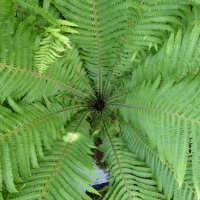Loopy Pro: Create music, your way.
What is Loopy Pro? — Loopy Pro is a powerful, flexible, and intuitive live looper, sampler, clip launcher and DAW for iPhone and iPad. At its core, it allows you to record and layer sounds in real-time to create complex musical arrangements. But it doesn’t stop there—Loopy Pro offers advanced tools to customize your workflow, build dynamic performance setups, and create a seamless connection between instruments, effects, and external gear.
Use it for live looping, sequencing, arranging, mixing, and much more. Whether you're a live performer, a producer, or just experimenting with sound, Loopy Pro helps you take control of your creative process.
Download on the App StoreLoopy Pro is your all-in-one musical toolkit. Try it for free today.
GeoShred Experiment #6
This is basically me arsing about with GeoShred… (again…) this time a video 😊
@McD asked for something Lydian… not sure if this counts?
@AlterEgo_UK asked how it was set up so here are the tricks used… happy to provide more info…
1) In MPE mode GS sends out notes from each string on a different channel. These channels can then be mapped to different instruments.
2) Use a user modified Control surface. GS allows you to change most of the controls on the supplied preset control surfaces.
3) The sliders are controlling the volumes of channels in AUM.
4) By inverting the Midi Control Range Setting in AUM, one slider can increase the volume of one channel while decreasing the volume of another.
5) If you keep a note held down in GS you can move to a new octave and the note stays at the original octave.
6) If you keep a note held down in GS you can basically do other things like changing the Performance Settings and then come back and the note will still be playing.
7) The XY pad in GS can be mapped to whatever you want!




Comments
I love your mastery of this interface… they really have perfected some ideas for a touch interface.
I was trying to pick the root and most of the time it seemed to be A which for these circled notes would
Be Ionian. To create a Lydian Melody I’d need to say D is my root. Are you conscious of the “Root Note”
When you play or is it more of a follow your ears approach rather than something analytical?
I don’t want this mode thing to detract from your approach and the results which speak for themselves.
If I couldn’t see the GeoShread interface I’d just focus on the music. I can’t apply the music theory to actual music because
I have done the work to hear chord progressions and recognize them in realtime. And I think I’m OK with that just
Reacting to the confirmed expectations and delighted in pleasant surprises.
Bravo! Super gorgeous! Thank you for sharing these tricks as well, I'll have to try the string per instrument setup.
Wow, I had no idea that GeoShred could be this versatile and expressive. It's a real eye opener.
And thanks for posting this as a video. It's highly instructive to see the played notes and interface changes in real time.
Thank you, @GeoTony . Will enjoy watching this later! 😀
+++++++++++
Hi Tony,
Lovely composition and recording.
This seems to be quite cinematic, and a perfect soundscape for a movie.
Thank you for this beauty!!!
Rene
Wow well done
I really love the sound of that also your use of the app
I use GeoShred as well but I have barely scratched the surface not even understanding half of the stuff you can do with this app
You use Geoshred in ways I can't even imagine. I also appreciate the video. Just amazing what you make this app do!
Thanks everybody for the nice comments 😊
Your entirely correct @McD … I dialled in Lydian on the control surface and then my brain went off piste and just did something else… I envy your ability to know what is being played just by listening!
I have to start up an app with a keyboard that can play in the background or put your YouTube in the background (I pay for that feature and to avoid all ads… worked out well and applies to all my devices). Then I listen for the note that sounds like the ending note… the “root” or tonal center. Most people when listening to music that stops could hum this note. Test yourself.
It’s not a magical skill… doing it without the pitch reference to name that note is pretty cool. It’s the benefit of perfect pitch.
Alternately, you can build a scale off that note and hum it and with work you’ll learn the modals melodies of the 7 scales and a lot more like blues, whole tone, etc.
In music school they call this exercises “ear training” and the aim is usually to be able to pick up some printed music and sing the music. The super magical version of this can read chords and hear that too.
Supe magical musicians can look at orchestral score where many of the instruments are written in transpose parts and pull out the chords and melodic ideas… there are many stories of the Boulanger sisters and their ability to hear printed music. Which also means they can just sit with a pencil and write and “hear” the results in total silence.
@Geotony has a great ear as evidenced by his improvisations and one take creations. He basically just skipped the whole notation and music school sequence. Kids growing up today will have a pretty basic knowledge of written (by hand) language. Many may never learn to read script and only draw block letters. With an increasingly digital world and devices for communicating and creating maybe that’s a fair trade off for digital literacy.